The minibus was most ordinary in its uncomfortable status and offered little in the way of a new travel experience to either myself or Scott for the two half hour journey from Antananarivo to Moromanga. We passed through picturesque rolling hills with little villages & green rice paddies through to the bustling market town of Moromanga. Scott and I chatted the whole way and this made the journey pass very quickly.
He was from California and had been travelling for a total of twelve years
. He was originally a stand up comedian on the US circuit, but had fallen on hard times at the beginning of the naughties and was now working on some sort of individual project that involved continual travel with a large VT recorder. He was an interesting guy.
At Moromanga, we had to change from an “inter-city taxi brousse” to a “local taxi brousse” which was painless enough. The latest vehicle was quite a drop down in class though, from the Toyota edition minibus to something much larger that gave the impression of being to held together by ‘sticky back plastic’.
The back of the vehicle/truck had adjacent seating and a standing area, which was crammed full of people and sacks of rice at every opportunity. However yet again it was somewhat painless and after 40 minutes we were turning off the “highway” into Andasibe. I had decided to stay at the Hotel Feon’ny Ale which was a little above Scott’s budget, but in the end he also did decided to take a bungalow there
. I had my heart set on one of the attractive wooden bungalows set opposite the national park boundaries where (according to reviews on Trip Advisor) Lemurs would cavort in the trees at dusk.
I was shown one by the staff and immediately took it. Scott decided on another cheaper bungalow at the back of the property away from the park boundary. Whilst the view from his was not as nice as mine it was half the price.
As it was late in afternoon I unpacked and sat on my balcony reading, when sure enough after some thirty minutes a group of Brown Lemurs suddenly appeared in the branches opposite and entertained me for some twenty minutes. This was great and so picturesque. They were a little too far away to get a real look or photograph, but it just wetted my appetite for entering the park the next day.
I joined Scott later for a drink in the restaurant that was built also beautifully overlooking the park and a river at the entrance to the hotel
. As the sun started to dip, we decided to quickly walk the two kilometres to the park entrance to get an idea from the guides when we should arrive for the walks tomorrow (as the Lonely Planet was yet again, somewhat confusing).
About 30m from the entrance to the park we passed the entrance to the Reserve de Torotorofotsy, which is a private reserve owned by the local Mitsinjo Community. Here we met Pierre, a local Mitsinjo man offering his services as a guide, both for the National Park, Torotorofotsy and the Mahay Mitia Ala (a park located south of the main national park). He seemed a nice enough guide, and he gave some good information, but as it was now dark we decided to return to the hotel.
That night we met the Prof of Biology from Trinity College Dublin and her PhD student, both hardly looking a day over 25 years. They were lovely people and a great source of information and the Professor was particular generous in her praise of a guide called Patrice who had taken them to a more distant national park called Mantadia. I was particularly interested in this Patrice, and persuaded Scott to start early the following morning. Scott was worried about his foot injury which he was now speculating was actually a break.
At 6
.00am, we had breakfast and we arrived outside the National Park gates at 6.45, only to find that Patrice had already gone with another group. Pierre was there and after a brief deliberation we decided to follow the LP advice and ask Pierre to take us to Mahay Mitia Ala, as we both felt there would be less tourists.
As we walked further down the main road towards the village of Andasibe, the heavens opened and we started to get our first soaking of the day. The weather would continue to be schizophrenic in nature throughout the duration of our stay, wet one minute, bright, sunny and hot the next.
The real purpose of our trip was to see an Indri. The Indri is the largest Lemur and is rare and has never been successful kept in captivity. Locally it is known as the Babakoto and is famed for its amazing call, which according to the Irish Professor would occur at precisely 8
.10am. Once inside this park we walked up around the base of a small hill, slowly looking and listening for Indris. I began to suspect that Pierre was working with a spotter or additional person who was tracking a group of Indris and this turned out to be true in his case and that of every guide in Madagascar.
Sure enough after 40 minutes of light climbing and Scott com paining about his foot, we spotted the group and met up with the tracker. It turned out to be a typical family group of five Indris high up in the tree tops, with male, female (the boss - as with all Lemurs) and three offspring. They slowly munched leaves, whilst oblivious to my excitement below, and then elegantly swung from one tree to another. Watching them was great, photographing them was not easy as they were so far away and as for Scott’s VT - well that was impossible. The rain came again, and we had to clamber down sheer forest drops away from the paths, which was difficult due to the density of the trees and thick foliage. Slipping, sliding and all the while getting soaked mean’t that I could sense Scott’s unease. However, using my zoom lens meant that I could at least see them clearly when the rain abated, whilst knowing that my photos would not be that great. Sure enough at 8.10am, the forest suddenly roared into life as first a neighbouring troupe and our group let rip with these famous cries
. I was perhaps the closest I had been to the male when he started and the sound and the sight of him calling reminded me of a Red Howler in the Amazon in 2006. It was ear splitting.
We left the park afterward this experience. I was soaked but happy and Scott in pain. He hobbled down to the railway station to see what time his Mad Train was due in two days time, whilst Pierre offered to show me a Tree Leafed Gecko that a friend of his had spotted, in the open by the road moving in daylight. He quickly located it in a thicket and we clambered inside. This rare lizard (even rarer at this time of day) is almost impossible to spot as its shaped and coloured like a piece of bark and it lies flat on a trunk awaiting passing food. This one was moving (albeit slowly) showing off its amazing camouflage and extraordinary large blue/grey eye. This was great being able to get so close in broad daylight. Down at the station in the centre of wet, quiet Andasibe, we could not find Scott and so I invited Pierre for a coffee at a roadside stall. I also told him I would visit his community’s reserve, Torotorofotsy, that afternoon.
Back at the hotel I met Scott, who was in great pain, but entertaining a group of Dutch travellers and an English girl, who happened to be a doctor. She looked at his foot and thought it was not broken. I was wondering if it was Gout. After lunch I went straight back to find Pierre and started off in his Reserve. This was a much better idea, “to get him to guide in the place he knows best,” I thought. Straight away he was finding an abundance of small Chameleons in the trees around the entrance some much smaller than the little finger on my hand. Further on into a gully we found Transparent Frogs, a Crab Spider (a small red spider the size of a 5 pence coin) shaped like a crab, the bright ruby red Flatid Leaf Bug and the extraordinary Giraffe-Necked Weevil. I was starting to understand the pull of Madagascar on all animal lovers.
After an hour or so we met the tracker, and then I encountered the small group of Indri’s. To my amazement after some five minutes, with the weather perfect, the leading male started to descend from the tree tops down to the forest floor. Unlike that morning, it was much easier going where he descended and this enabled both Pierre and myself to get quite close (3m away) as he climbed down to head height to dine on some leaves. This was an amazing experience and I was not quite prepared for such an encounter with such a majestic animal. Up close he was just extraordinary with piercing blue green eyes darting from one side to the other as he munched away. I felt privileged and Pierre said I was “lucky”. I had a full ten minutes in his company. We even spotted some pairs of Brown Lemurs as we were leaving.
Scott seemed a little unbelieving when I excitedly recalled my trip. Soon enough I was back off again to meet Pierre, this time for a night walk in his reserve. This was also great, many sleeping Chameleons (sleeping at the end of leaves of branches - motionless in the darkness) many frogs, spiders and one completely fast asleep bird. But I got drenched. Pierre offered to walk me back to the hotel and the on the way our luck completely altered and we spotted Dwarf and tiny Mouse Lemurs in abundance, simply by the roadside.
The next morning I managed to establish contact with Patrice and agreed to meet him to see the National Park, at the early time of 6.45am. This time we were going to miss the Indri and go straight for the Diademed Sifaka or Golden Sifaka, arguably the most beautiful of all Lemurs.
After the success of the first day I could hardly believe that my luck would hold for the second and that I would spot the Diademed Sifaka. When I arrived early to meet Patrice it was gloomy, damp, windy and hardly inviting. But being the first at the park we glided through the formalities and were soon away. Within moments of starting our walk to where Patrice’s tracker would be, we spotted a group of tiny Bamboo Lemurs in a ticket of Bamboo, energetically devouring breakfast and very close to us.
We trudged on alone over ever slippery pathways that were much easier and wider to negotiate than yesterdays adjacent reserves. About half way along we immediately turned up hill and after a short steep climb plateaued out into a thick part of the forest dominated by tall slender trees. Patrice soon indicated the group of Diademed Sifaka’s in the tree tops. There were six individuals led by the female and with the male and four offspring. They were completely different to the black and white Indris. They are mostly grey with white and black heads, plus their signature dramatic golden colouring across their arms and legs. Unlike the Indris they have a powerful white tail.
They were graceful to watch and I watched for some two hours (mostly on my own without any other disturbances from other tourists). It was after the Indris started howling again at 8.10am, that one of the smaller Sikakas started to descend from the tree tops. Why was happening was again unclear, but he came right down the tree and the walked over to the one I was behind and went up that one. Extraordinary to be so close and Patrice remarked “you are lucky”.
When the tourist masses started to arrive, Patrice and I left, only to stumble on a group of Indris, being followed by just four tourists. These primates were not too far up the trees so I photographed them, before heading back for an early lunch. Another magical visit and Scott listened incredulously at lunch. With my main goals reached after one and half days, I thought I would leave early and return to Tana, for my flight to Sambava. Scott decided on finally giving Pierre one last go and rather than do nothing I decided to go along too. This was after a sumptuous lunch at the hotel restaurant and being entertained by a group of Indris on the other side of the river.
Pierre was pleased to see both of us back at Torotorofotsy and Scott briefed him about what he needed (if possible) to allow him to use his VT camera. I did think it was slightly foolhardy to think that an Indris would come down again from the tops of the trees - but who knows? Strangely though (and for the first time in this trip to Andasibe), the sun came out as we entered Torotorofotsy with Pierre and stayed there for the duration of our visit. We took a different route to last time ascending the hill to meet the tracker on much easier path with a less steep incline. With the sun pocking through the closely knit, wet thin tree trunks, this ascent had an almost magical quality. After some 40 mins we meet the tracker and there above his head were a group of Indris. I stepped back and let Scott sort out his VT recorder. Unfortunately they were high up in the trees and Pierre suggested we move off track amongst the dense trees to get a better view. After twenty minutes, Scott was becoming frustrated as again they were too far away for his VT, when all of a sudden one of the Indris started coming down his tree trunk again, this time up by the pathway. I waited in astonishment to see him descend to just above head height and start dinning on leaves above the pathway. Quickly and quietly, Scott got in position and then we had an unbroken 20 mins photographing this beautiful tail less creature.
After this breathtaking opportunity, which was even more memorable than what happened on the previous day, Pierre added that his tracker had noticed a young Parson’s Chameleon (the world’s largest Chameleon) on a tree trunk on his way here. We headed off, and sure enough this majestic beast about 24” in length was quietly trying to hide on a young saplings tree trunk. The Parson’s is a very impressive Chameleon, and not just in size. Its colourings are incredible and in the afternoon sunlight we ere treated to a kaleidoscope of blues, turquoise, greens, yellows and a little magenta. It has two small prominent horns underneath its bright yellow circular eyes and a streaky stream of mucus seems to drip between the two (either that or it had a cold). Beautiful little claw like green feet and an impressive blue month underneath its startled orange eyes. Unfortunately we never saw its tongue “which is the length of its entire body” Pierre added.
This was a sensational trip, and Scott was now as fascinated by the Indri as I am, but still complaining about his foot. He went to organise his Mad train ticket and I decided on one last night walk with Pierre.
After so many fabulous visits to the forest this one was well and truly rained out. We had settled on a trek at night deep into the jungle to try and find the Pygmy Kingfisher, the only member of the kingfisher family that lives in the forest and hunts insects and forest floor dwellers (Patrice & Pierre told me). But all I did was get soaked and see the occasional frog after some three hours. Even the spiders were taking cover. Afterwards I thanked Pierre.
But the time I awoke the next morning Scott had disappeared on his Mad Train heading west. I had a leisurely breakfast before catching a taxi brousse back to Tana and quickly checked in at the Tana - Jacaranda.
Indri, Chameleons, Weevils, Frogs and Night Safari
Saturday, April 12, 2014
 Andasibe, Madagascar
Andasibe, Madagascar
Other Entries
-
31Buddhist Festival, Feral Dogs, Exploding Cakes
Dec 01132 days prior Bomdila, Indiaphoto_camera6videocam 0comment 0
Bomdila, Indiaphoto_camera6videocam 0comment 0 -
32A Horror Journey
Dec 03130 days prior Tezpur, Indiaphoto_camera4videocam 0comment 0
Tezpur, Indiaphoto_camera4videocam 0comment 0 -
33Hornbill Festival, Nagas & Nagaland
Dec 10123 days prior Kohima, Indiaphoto_camera6videocam 0comment 3
Kohima, Indiaphoto_camera6videocam 0comment 3 -
34Pied Pipers, Hard Beds, Ao and Chang tribes
Dec 18115 days prior Mokokchung, Indiaphoto_camera7videocam 0comment 0
Mokokchung, Indiaphoto_camera7videocam 0comment 0 -
35Battles, Monoliths, Street Photography, Home
Jan 01101 days prior Dubai, United Arab Emiratesphoto_camera6videocam 0comment 0
Dubai, United Arab Emiratesphoto_camera6videocam 0comment 0 -
36Athens, Bristol, Doctors and Rain - lots of rain
Jan 1587 days prior Athens, Greecephoto_camera2videocam 0comment 0
Athens, Greecephoto_camera2videocam 0comment 0 -
37Addis, Bus Travel, Malibu Storks and Lake Storms.
Feb 0170 days prior Addis Ababa, Ethiopiaphoto_camera4videocam 0comment 0
Addis Ababa, Ethiopiaphoto_camera4videocam 0comment 0 -
38Minibuses, Police, Impounding, Gon
Feb 0566 days prior Awasa, Ethiopiaphoto_camera4videocam 0comment 0
Awasa, Ethiopiaphoto_camera4videocam 0comment 0 -
39Baboons, Mountains, 4000m Trek, Ibex
Feb 0962 days prior Gonder, Ethiopiaphoto_camera5videocam 0comment 2
Gonder, Ethiopiaphoto_camera5videocam 0comment 2 -
40Churches, Caves, Rocks, Pilgrims plus Minibuses
Feb 1655 days prior Lalibela, Ethiopiaphoto_camera5videocam 0comment 0
Lalibela, Ethiopiaphoto_camera5videocam 0comment 0 -
41Volcanos, lava, sulphur & aggressive tourists.
Feb 2150 days prior Mekele, Ethiopiaphoto_camera4videocam 0comment 2
Mekele, Ethiopiaphoto_camera4videocam 0comment 2 -
42Rock Hewn Churches, Plan Changes, Addis
Mar 0142 days prior Wukro, Ethiopiaphoto_camera3videocam 0comment 1
Wukro, Ethiopiaphoto_camera3videocam 0comment 1 -
43Lip Plates, Mursi, Mingi Children & Bad 4x4s
Mar 0538 days prior Jinka, Ethiopiaphoto_camera4videocam 0comment 0
Jinka, Ethiopiaphoto_camera4videocam 0comment 0 -
44Hamar, markets, clothes and free beer (not for me)
Mar 0835 days prior Turmi, Ethiopiaphoto_camera4videocam 0comment 0
Turmi, Ethiopiaphoto_camera4videocam 0comment 0 -
45Bull Jumping, Whipping, Wiggly Canoes, Addis Rain
Mar 1726 days prior Johannesburg, South Africaphoto_camera6videocam 0comment 4
Johannesburg, South Africaphoto_camera6videocam 0comment 4 -
46Family, Food, the Cape and Animals
Apr 0111 days prior Fish Hoek, South Africaphoto_camera4videocam 0comment 0
Fish Hoek, South Africaphoto_camera4videocam 0comment 0 -
47Baguettes, Renault 4s and a little bit of France
Apr 093 days prior Antananarivo, Madagascarphoto_camera2videocam 0comment 0
Antananarivo, Madagascarphoto_camera2videocam 0comment 0 -
48Indri, Chameleons, Weevils, Frogs and Night Safari
Apr 12 Andasibe, Madagascarphoto_camera6videocam 0comment 0
Andasibe, Madagascarphoto_camera6videocam 0comment 0 -
49Air Mad, Rain, Leeches, Trekking, Jungles
Apr 186 days later Sambava, Madagascarphoto_camera6videocam 0comment 0
Sambava, Madagascarphoto_camera6videocam 0comment 0 -
50Sifakas, Pygmy Kingfishers, Maroujejy NP Part 2
Apr 219 days later Manantenina, Madagascarphoto_camera6videocam 0comment 0
Manantenina, Madagascarphoto_camera6videocam 0comment 0 -
51Cream sauces, paradise, sandy beaches, wildlife
Apr 2715 days later Diego Suarez, Madagascarphoto_camera5videocam 0comment 0
Diego Suarez, Madagascarphoto_camera5videocam 0comment 0 -
52Tsingy Rouge, Lemurs, Corruption, Air Madagascar
May 0119 days later Joffreville, Madagascarphoto_camera5videocam 0comment 0
Joffreville, Madagascarphoto_camera5videocam 0comment 0 -
53Glamping, Nat Parks, Dew, Blood & Gooners
May 2240 days later Swellendam, South Africaphoto_camera5videocam 0comment 0
Swellendam, South Africaphoto_camera5videocam 0comment 0 -
54Big Holes, Shut Attractions, Bush, Endless Roads
May 3048 days later Kimberley, South Africaphoto_camera4videocam 0comment 0
Kimberley, South Africaphoto_camera4videocam 0comment 0 -
55Fires, Towing and the Kindness of Strangers
Jun 0150 days later Gaborone, Botswanaphoto_camera1videocam 0comment 0
Gaborone, Botswanaphoto_camera1videocam 0comment 0 -
56Auto Parts, Nata Birds, Wind and Elephants
Jun 0655 days later Francistown, Botswanaphoto_camera3videocam 0comment 0
Francistown, Botswanaphoto_camera3videocam 0comment 0 -
57Water, Rivers, Camping, Customs and Getting Wet
Jun 1059 days later Victoria Falls, Zimbabwephoto_camera5videocam 0comment 0
Victoria Falls, Zimbabwephoto_camera5videocam 0comment 0 -
58Sand, Hides, Elephants, Birding, getting Stuck
Jun 1564 days later Kasane, Botswanaphoto_camera7videocam 0comment 0
Kasane, Botswanaphoto_camera7videocam 0comment 0 -
59Safari, Glamping, Sand & Wildlife
Jun 2069 days later Savuti National Park, Botswanaphoto_camera4videocam 0comment 0
Savuti National Park, Botswanaphoto_camera4videocam 0comment 0 -
60Charging Hippos, Delta, Glamping & Roaring Lions
Jun 2574 days later Maun, Botswanaphoto_camera4videocam 0comment 0
Maun, Botswanaphoto_camera4videocam 0comment 0 -
61Creationists, Rare Birds, Rock Art & Meteorites
Jun 2877 days later Rundu, Namibiaphoto_camera5videocam 0comment 0
Rundu, Namibiaphoto_camera5videocam 0comment 0 -
62Bushmen, Hunts, the San, Gravel Roads, Car Trouble
Jul 0483 days later Tsumkwe, Namibiaphoto_camera8videocam 0comment 0
Tsumkwe, Namibiaphoto_camera8videocam 0comment 0 -
63Animals, waterholes, dust, more dust
Jul 1089 days later Etosha National Park, Namibiaphoto_camera4videocam 0comment 0
Etosha National Park, Namibiaphoto_camera4videocam 0comment 0 -
64Fog, concrete, sand, cold, wind plus illness
Jul 1796 days later Walvis Bay, Namibiaphoto_camera5videocam 0comment 0
Walvis Bay, Namibiaphoto_camera5videocam 0comment 0 -
65Red Dunes, Mud Flats, Quiver Trees plus Sand
Jul 23102 days later Keetmanshoop, Namibiaphoto_camera5videocam 0comment 0
Keetmanshoop, Namibiaphoto_camera5videocam 0comment 0 -
66Breaching Sharks, Rooibos and Rain
Aug 01111 days later Vanrhynsdorp, South Africaphoto_camera4videocam 0comment 0
Vanrhynsdorp, South Africaphoto_camera4videocam 0comment 0

 Andasibe, Madagascar
Andasibe, Madagascar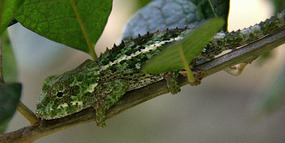
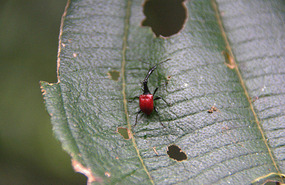
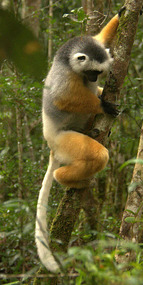

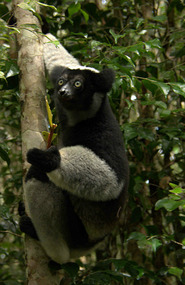
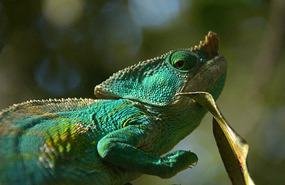









2025-05-22